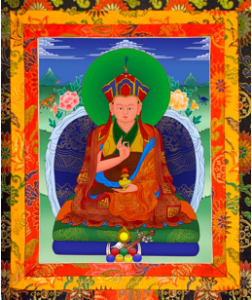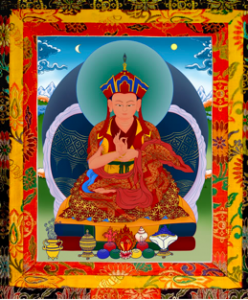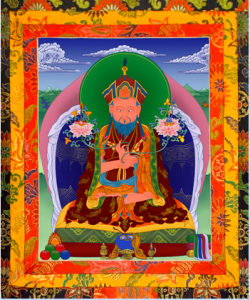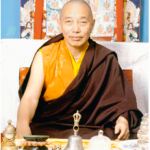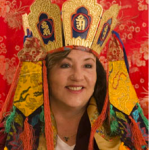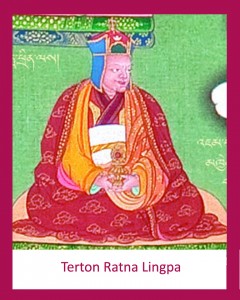Vidhyadhara Migyur Dorje
(1645 – 1667)
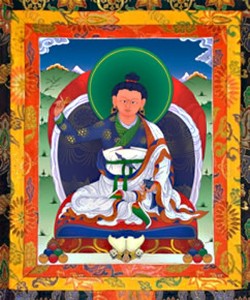
The Great Terton (Treasure Revealer), Migyur Dorje was born in Nhom Tod Rola in the province of Kham in Eastern Tibet on the seventh day of the ninth month of the Wood Bird Year (1645). Just as Lord Buddha Shakyamuni, he was born without harming his mother or causing her even the slightest bit of pain. His right hand was marked by an extraordinary blue mole, symbolizing the single-essential nature of the Dharmakaya (The Body of the Ultimate Truth).
As a small child, he enjoyed using his hands to perform mudras (Dharma hand gestures) and carried out secret yogic exercises by himself. As soon as he could speak, he told others that he was a lama of the Kathog tradition and was able to give detailed description of his previous life at the Kathog Monastery.
During his childhood, he had many visions of Great Masters. One day he had a vision of Guru Loden Chogsed, one of the eight manifestations of Padmasambhava, and through gesture transmission, he understood how to read and write. When he was seven years old, in a state of pure vision, many Primordial Wisdom Dakinis told him of the importance of relying upon a guru. Instantly, without any obscuration he had a vision of the great scholar and siddha, Raga Ah Syei (Chagmed Rinpoche), who was in solitary retreat, and an intense desire arose to be in his presence.
When he was ten years old, he met Karma Chagmed Rinpoche in person and received the purification blessing of Nam Jom and Dor Sem, and the transmission of Thug Drub Yang Nying Dupa (Innermost Essence of the Mind Accomplishment). The following year, Migyur Dorje entered into retreat with the Great Mahasiddha, Karma Chagmed Rinpoche. At the retreat, Migyur Dorje received continual visions of Buddha Amitayus, Guru Padmasambhava, Buddha Amitabha, Avalokiteshvara and many other Yidams (Meditational Deities). From each of the Yidams, Migyur Dorje received many specific empowerments and transmissions. These he compiled into thirteen volumes called Nam Chö (Space Treasures) and practiced with single-pointed focus until he attained the full accomplishment of each of these treasures.
Although Terton Migyur Dorje was destined to reveal earth termas, the merit of sentient beings was deficient and it was due to this that his presence in this world was cut short. In 1667, the year of the Fire Sheep, he was in his twenty-third year and while staying in a sacred place in Mugsang, he began to show signs of illness. As the third month approached, his illness grew worse and he was forced to stop giving all dharma transmissions. On the eleventh day, he prayed to the meditational deities and offered many dedication prayers. On the fourteenth day, he had a vision of all eight Herukas and their accomplishment mandalas. On the morning of the fifteenth day, he beheld the three root-peaceful and wrathful assemblies of deities and assuming the vajra posture he entered into meditative equipoise. On the evening of the sixteenth day, while counting mantras on his prayers beads, he passed into the empty sphere of truth and remained sitting upright in meditative equipoise for three days.
At the cremation, rainbows in the shape of pitched tents appeared in the sky. The heart and tongue of Migyur Dorje were undamaged by the fire. These, together with the bone relics embossed with vowels and consonants of the Tibetan language were placed inside golden Stupas, which served as objects of refuge revered by devotees to this day.
Reference: Pathgate Institute of Buddhist Studies
Palyul Nyingma Institute, Singapore
